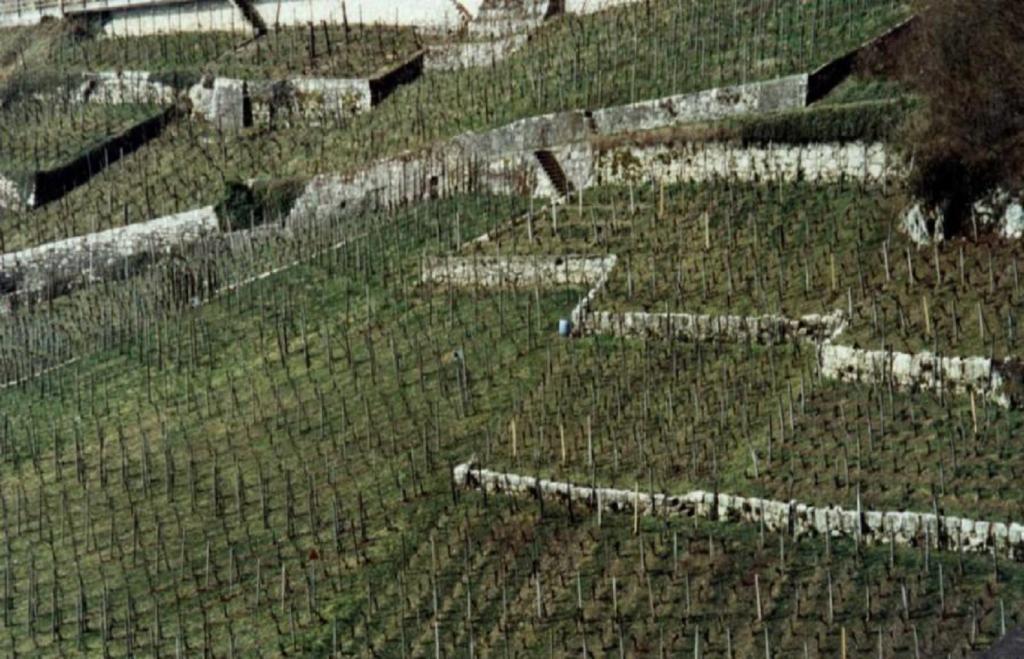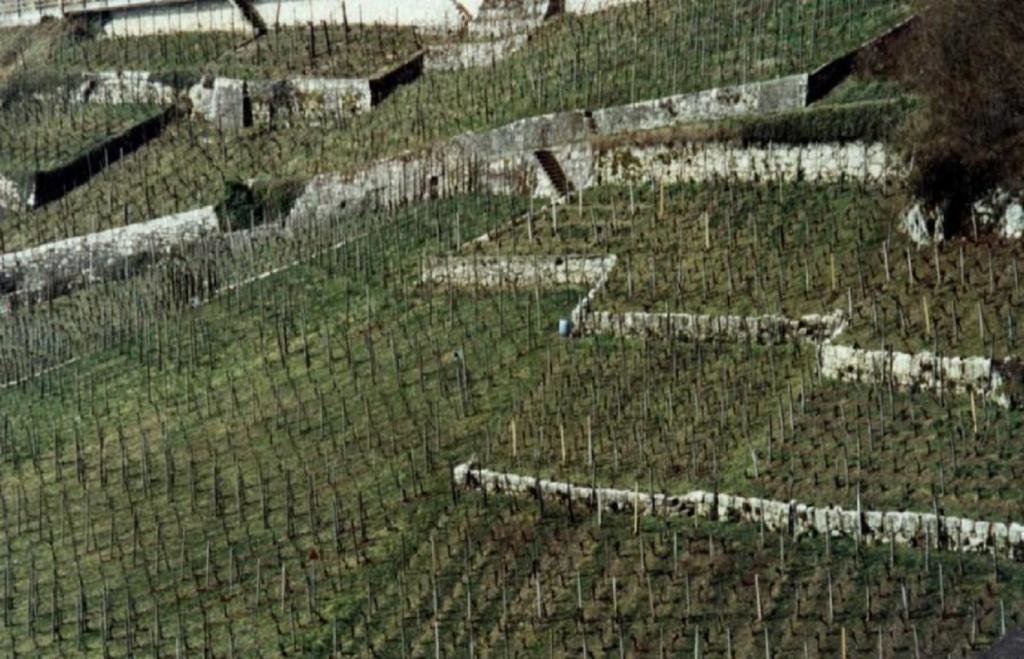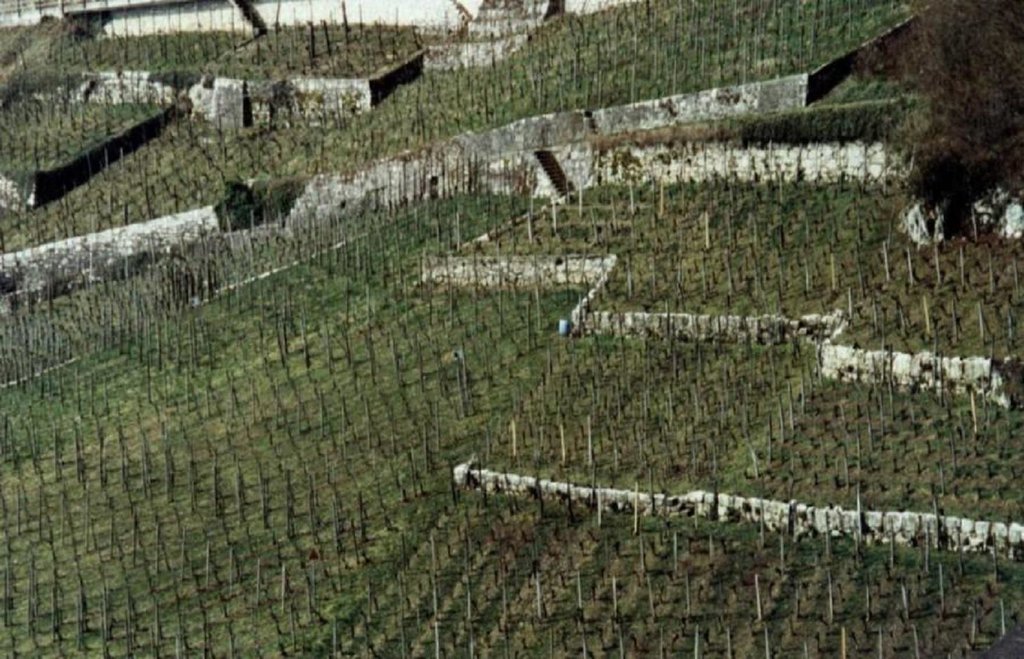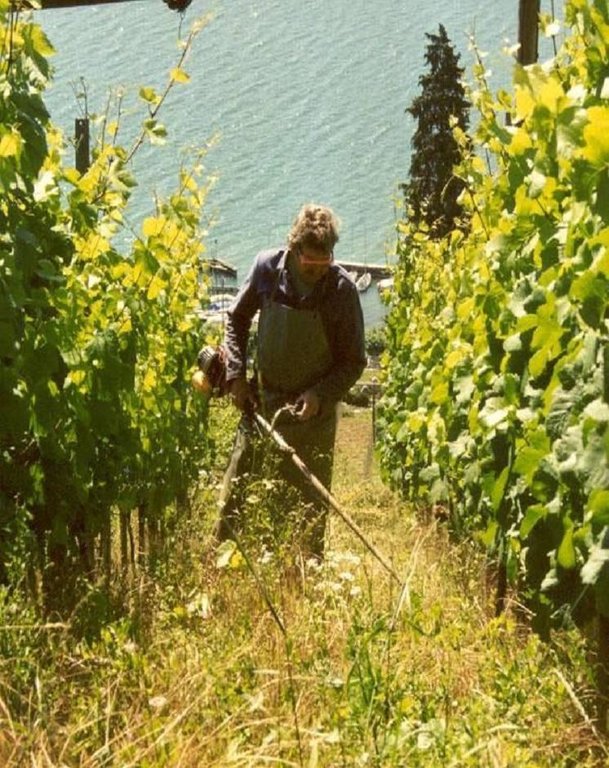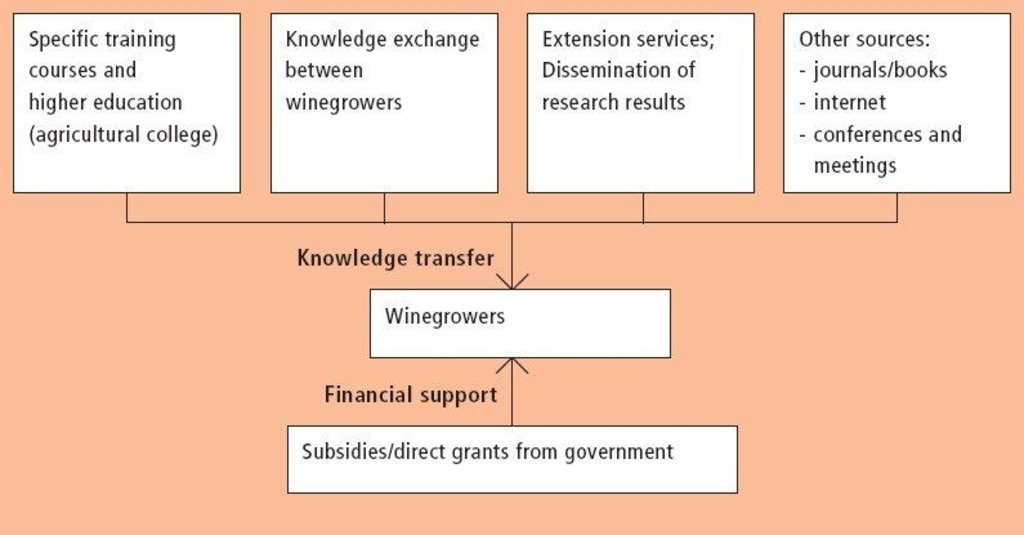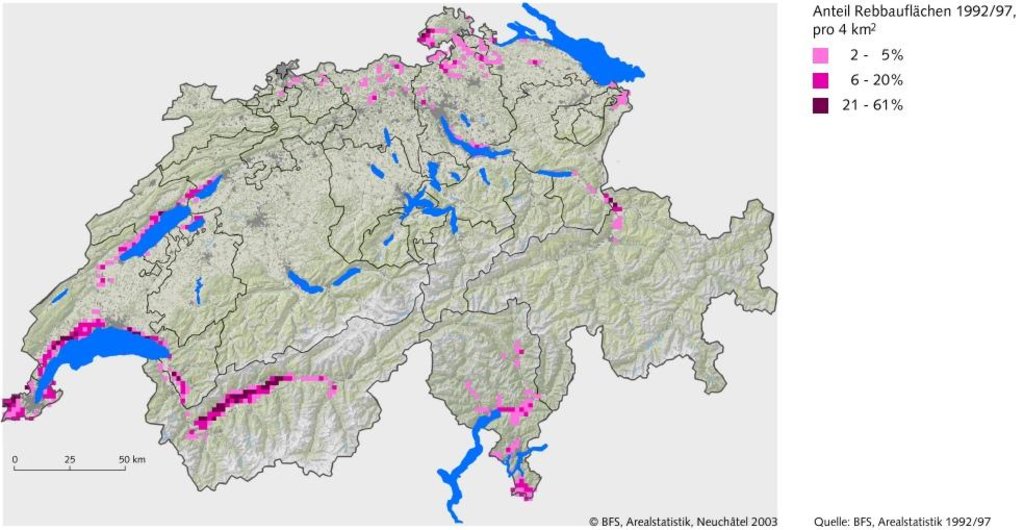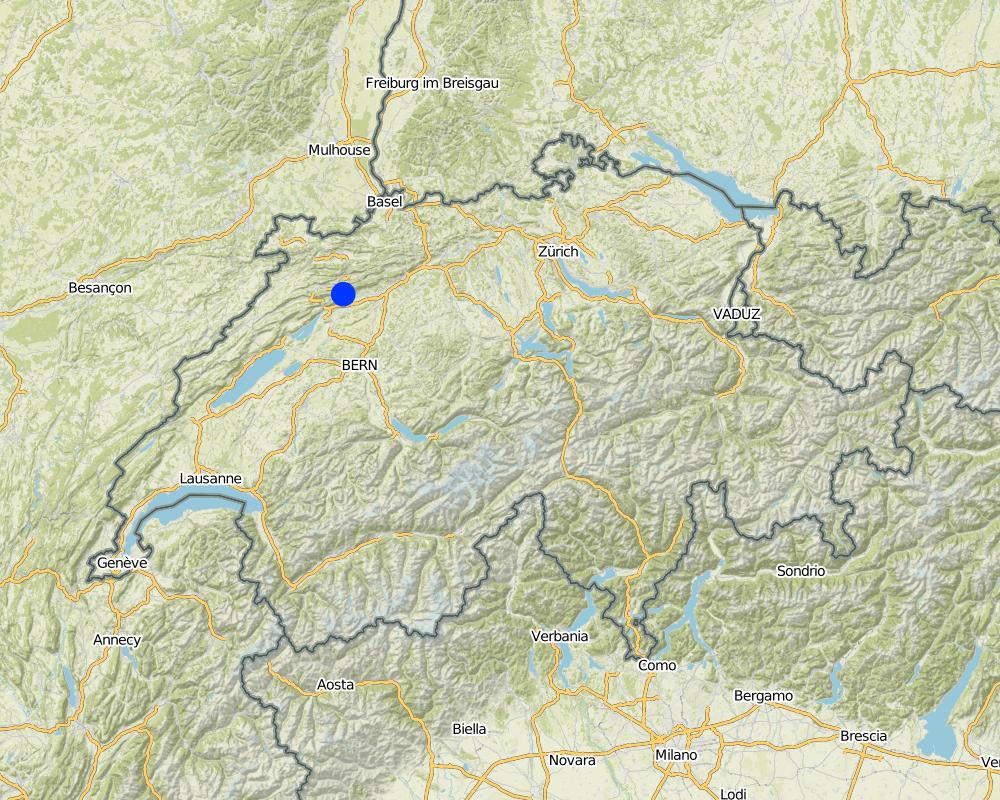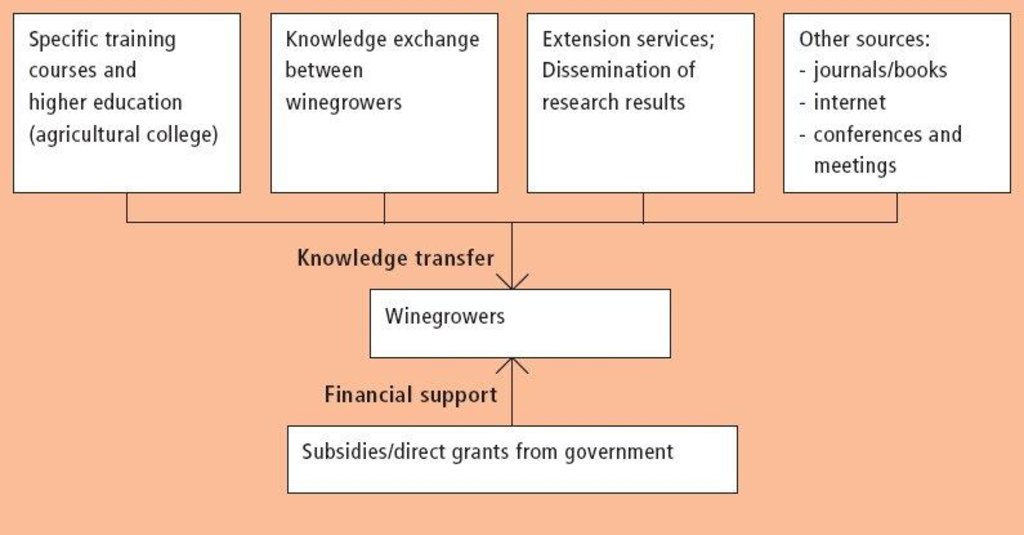Farmer initiative within enabling environment [Suisse]
- Création :
- Mise à jour :
- Compilateur : Nicole Guedel
- Rédacteur : –
- Examinateurs : David Streiff, Deborah Niggli
approaches_2623 - Suisse
Voir les sections
Développer tout Réduire tout1. Informations générales
1.2 Coordonnées des personnes-ressources et des institutions impliquées dans l'évaluation et la documentation de l'Approche
Nom du projet qui a facilité la documentation/ l'évaluation de l'Approche (si pertinent)
Book project: where the land is greener - Case Studies and Analysis of Soil and Water Conservation Initiatives Worldwide (where the land is greener)Nom du ou des institutions qui ont facilité la documentation/ l'évaluation de l'Approche (si pertinent)
CDE Centre for Development and Environment (CDE Centre for Development and Environment) - Suisse1.3 Conditions relatives à l'utilisation par WOCAT des données documentées
Le compilateur et la(les) personne(s) ressource(s) acceptent les conditions relatives à l'utilisation par WOCAT des données documentées:
Oui
1.4 Références au(x) questionnaire(s) sur les Technologies de GDT
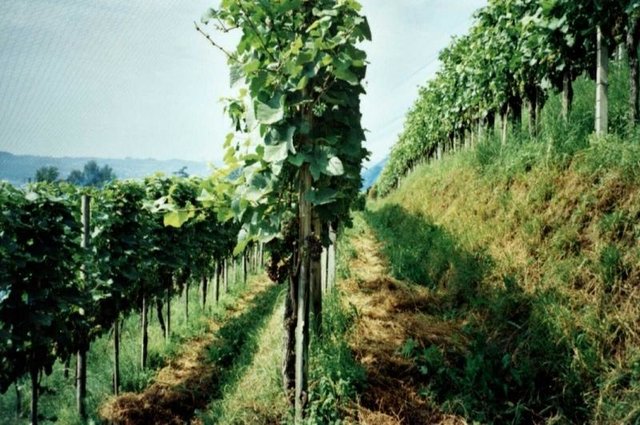
Contour small bench terraces with permanent green cover … [Suisse]
Contour small bench terraces with stabilising permanent green cover in steep sloping vineyards.
- Compilateur : Nicole Guedel
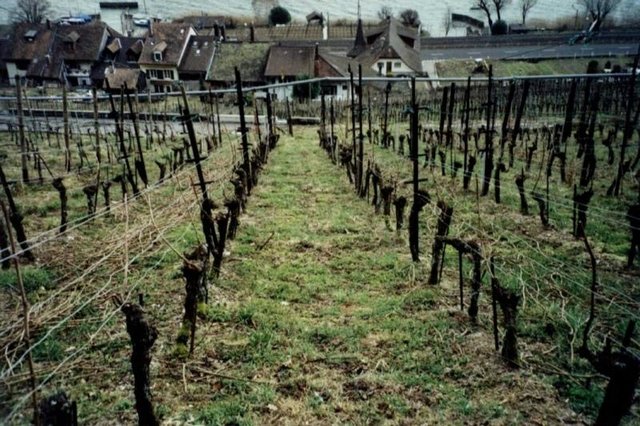
Green cover in vineyards [Suisse]
Naturally growing or sown perennial grasses/herbs providing cover between rows in sloping vineyards, where the vines are usually oriented up and down slope.
- Compilateur : Nicole Guedel
2. Description de l'Approche de GDT
2.1 Courte description de l'Approche
Initiative and innovation of land users, stimulated by government's technical and financial support.
2.2 Description détaillée de l'Approche
Description détaillée de l'Approche:
Aims / objectives: The application of green cover (a ???living mulch??? between vine rows) in viniculture within the case study area has been developed and spread, primarily, by experimentation and exchange of knowledge between winegrowers. Individual initiatives and personal contacts have been the most important elements. Other channels are: (1) higher education and specific training courses (the majority of winegrowers have undergone at least 3 years of agricultural college, including both applied and theoretical training); (2) participation in conferences and meetings; (3) self-teaching using the internet and national and international journals or books; and (4) extension services. Disseminated results from national research institutions also play an important role - over and above individual knowledge and experimentation. The approach is thus characterised by responsiveness of winegrowers to the various information sources listed above. This should be seen in the context of national agricultural policy which provides an ???enabling environment??? including payments to farmers: the production quotas of the 1950s were replaced in 2001 by direct grants (subsidies) based on area grown and/or other specific criteria, eg ecological services such as green cover. However, the technology of green cover spread spontaneously before direct incentives were tied to ???ecological production???. Government policy supports agriculture as a weak sector of the national economy, and guarantees, through subsidies, a high percentage of the overall national production. Subsidies in Swiss agriculture are amongst the highest in the world. These subsidies effectively keep wine production going. Vineyards are seen as an important part of the rural cultural heritage and as a characteristic feature of the landscape.
Methods: Recently, with this type of production system, there has emerged a further opportunity - to market wine under a label of controlled ecological production (???vinatura???). A step further is the label of ???organic production??? which, in addition to green cover, requires a range of other criteria to be strictly fulfilled (eg no use of chemical fertilizers/biocides). Customers are increasingly willing to pay a premium for such products. This is an example of a win-win situation: the environment is protected and simultaneously farmers are rewarded with a higher value for their output. Within the framework of subsidies to farmers and information availability, the ???approach??? to improved viniculture can therefore be viewed as an enabling environment for land users to take initiatives themselves. The diffusion of innovative technologies is also largely left to the land users.
2.3 Photos de l'approche
2.5 Pays/ région/ lieux où l'Approche a été appliquée
Pays:
Suisse
Région/ Etat/ Province:
Swiss viniculture area
Autres spécifications du lieu :
Switzerland
Commentaires:
The approach is not limited to the SWC technology area described in QT SWI01 and SWI02. It is rather representative for Switzerland.
Map
×2.7 Type d'Approche
- traditionnel/ autochtone
2.8 Principaux objectifs de l'Approche
The Approach focused mainly on other activities than SLM (viticulture as whole and its basic conditions (production of wine, financial questions, economy, technical aspects, equipment, ecology, viticulture and tourism))
The overall objective of national policy is, within a framework of subsidies, to allow farmers to develop and spread solutions themselves through access to sources of knowledge and information. The objectives of the farmers themselves are to improve their production systems through ecologically sound conservation.
The SLM Approach addressed the following problems: - initial technical problem of soil degradation within vineyards: no off the shelf solutions - slow spread of technical solutions (such as green cover which requires fundamental changes in land users attitudes)
2.9 Conditions favorisant ou entravant la mise en œuvre de la(des) Technologie(s) appliquée(s) sous l'Approche
normes et valeurs sociales/ culturelles/ religieuses
- entrave
In a community of winegrowers who are used to either clean tillage (traditional method) or chemical weeding, green cover implies a change of values and priorities. This can cause conflicts especially between neighbours and within families
Treatment through the SLM Approach: First, rising awareness of advantages and possible disadvantages of green cover by (further) education, literature, meetings / conferences and internet by research institutions and extension services. The second step is conflict resolution on a one-to-one
connaissances sur la GDT, accès aux supports techniques
- entrave
The implementation of green cover is strongly dependent on factors on farm or parcel level (available infrastructure / equipment, age of vines, planting system (density and distance of vines, characteristics of supporting elements, poles, wire system...))
Treatment through the SLM Approach: Individual consultation with extension service where specific advice required
autre
- entrave
Natural environment: Climatic (drought, frost) and pedological (soil depth) factors can intensify water and nutrient competition to the vine, danger of frost and therefore hamper the implementation of green cover.
Treatment through the SLM Approach: Information provided by mentioned sources. Examples of possible solutions: Green cover on every second interrow; green cover only in winter; agronomic measures to temporarily eliminate competition of cover vegetation (by cutting / mulching vegetation or r
3. Participation et rôles des parties prenantes impliquées dans l'Approche
3.1 Parties prenantes impliquées dans l'Approche et rôles
- exploitants locaux des terres / communautés locales
land user themselves (their network, exchange of knowledge, implementation)
Existing groups of land users
Working land users were mainly men (because the majority of Swiss winegrowers are men)
The integration of women is a key element of the approach. Nevertheless, there are moderate differences due to cultural factors: men are mainly in charge of agricultural activities, whereas women work in the household.
- gouvernement local
Districts, communities, villages
- gouvernement national (planificateurs, décideurs)
3.2 Participation des exploitants locaux des terres/ communautés locales aux différentes phases de l'Approche
| Participation des exploitants locaux des terres/ communautés locales | Spécifiez qui était impliqué et décrivez les activités | |
|---|---|---|
| initiation/ motivation | auto-mobilisation | |
| planification | interactive | the basic idea was further enhanced by planning based on available information from various sources |
| mise en œuvre | auto-mobilisation | responsibility for major steps; Responsibility of winegrowers of all steps |
| suivi/ évaluation | auto-mobilisation | Mainly: measurements/observations; partly: workshop/seminars, public meetings, reporting; Observation by land user. Some indicators are evaluated by extension services or research institutions. |
| Research | interactive | on-station; Both on-farm and on-station |
3.3 Diagramme/ organigramme (si disponible)
3.4 Prises de décision pour la sélection de la Technologie/ des Technologies
Indiquez qui a décidé de la sélection de la Technologie/ des Technologies à mettre en œuvre:
- les exploitants des terres seuls (auto-initiative)
Expliquez:
Decisions on the method of implementing the SLM Technology were made by by land users* alone (self-initiative / bottom-up)
4. Soutien technique, renforcement des capacités et gestion des connaissances
4.1 Renforcement des capacités/ formation
Une formation a-t-elle été dispensée aux exploitants des terres/ autres parties prenantes?
Oui
Formats de la formation:
- sur le tas
- entre agriculteurs (d'exploitants à exploitants)
- zones de démonstration
- réunions publiques
- cours
Thèmes abordés:
There are various possibilities which include green cover as one of several topics: (1) agricultural college (three years, including both practical and theoretical knowledge); (2) further education (full time or short courses) at agricultural universities; (3) attendance at regional, national or international meetings/conferences, organised by research institutions, extension services, or
4.2 Service de conseils
Les exploitants des terres ont-ils accès à un service de conseils?
Oui
Spécifiez si le service de conseils est fourni:
- dans les champs des exploitants?
Décrivez/ commentez:
Adoption; Key elements: palette of information sources, informal contacts, discussions, observations of different systems under personal trials.1) Advisory service was carried out through: non-governmental agency, government's existing extension system 2) Advisory service was carried out through: non-governmental agency, government's existing extension system; Extension staff: mainly government employees
Advisory service is very adequate to ensure the continuation of land conservation activities
4.3 Renforcement des institutions (développement organisationnel)
Des institutions ont elles été mises en place ou renforcées par le biais de l'Approche?
- non
4.4 Suivi et évaluation
Le suivi et l'évaluation font ils partie de l'Approche? :
Oui
Commentaires:
bio-physical aspects were ad hoc monitored by land users, other through observations; indicators: rate of erosion, organic matter content, soil moisture, water potential in vine leaves, compaction, soil structure, soil temperature, biodiversity, chemical analysis of wine, nutrient elements in soil and vines
technical aspects were ad hoc monitored by land users, other through observations; indicators: change of attitude towards green cover, knowledge about SWC and awareness of natural environment, change of appearance of man-made landscape
socio-cultural aspects were ad hoc monitored by land users, other through observations; indicators: costs, production, quality, manual labour, machine hours etc. Often data are not specifically gathered for green cover but total establishment and annual recurrent costs for different winegrowing systems can give some insight into the economic status of green cover
economic / production aspects were ad hoc monitored by land users through observations; indicators: diffusion of green cover (visual impression of the current status, time-series photos, descriptions from past)
area treated aspects were ad hoc monitored by 0 through observations; indicators: number of households involved (with a questionnaire, personal estimation, visual impressions), Number of farmers receiving direct payments
no. of land users involved aspects were ad hoc monitored by other through observations; indicators: None
There were few changes in the Approach as a result of monitoring and evaluation: Few changes to the technology or the approach have resulted directly from formal monitoring and evaluation.
4.5 Recherche
La recherche a-t-elle fait partie intégrante de l’Approche?
Oui
Donnez plus de détails et indiquez qui a mené ces recherches:
Especially ecological and technical aspects are important elements of the research institutions concerning SWC: e.g. management of green cover such as dealing with competition of water and nutrients to the vine or promoting living space for animals (especially insects) beneficial to grape production (e.g. promoting predators of pests as a possibility of biological pest control). But also economic
Research was carried out both on station and on-farm
5. Financement et soutien matériel externe
5.1 Budget annuel de la composante GDT de l'Approche
Commentez (par ex. principales sources de financement/ principaux bailleurs de fonds):
Approach costs were met by the following donors: government (national): 70.0%; local community / land user(s) (-): 30.0%
5.2 Soutiens financiers/ matériels fournis aux exploitants des terres
Les exploitants des terres ont-ils reçu un soutien financier/ matériel pour la mise en œuvre de la Technologie/ des Technologies?
Oui
5.3 Subventions pour des intrants spécifiques (incluant la main d'œuvre)
Si la main d'œuvre fournie par les exploitants des terres était un intrant substantiel, elle était:
- volontaire
Commentaires:
Labour is a substantial input and exclusively done voluntary by land users - though the overall agricultural system is subsidised
5.4 Crédits
Des crédits ont-ils été alloués à travers l'Approche pour les activités de GDT?
Non
6. Analyses d'impact et conclusions
6.1 Impacts de l'Approche
Est-ce que l'Approche a aidé les exploitants des terres à mettre en œuvre et entretenir les Technologies de GDT?
- Non
- Oui, un peu
- Oui, modérément
- Oui, beaucoup
The approach (with all its elements) has led to greatly improved soil and water management.
6.3 Durabilité des activités de l'Approche
Les exploitants des terres peuvent-ils poursuivre ce qui a été mis en œuvre par le biais de l'Approche (sans soutien extérieur)?
- oui
Si oui, décrivez de quelle manière:
Within the framework of the existing national policies the approach is sustainable.
6.4 Points forts/ avantages de l'Approche
| Points forts/ avantages/ possibilités du point de vue du compilateur ou d'une autre personne ressource clé |
|---|
| Very bottom-up oriented. The interest, the own initiative and the generation of own experience and knowledge is the dominant motor (How to sustain/ enhance this strength: Maintain the enabling environment put in place by the government which is the framework for this approach.) |
| Many information sources and ways of receiving information are available and used frequently. |
6.5 Faiblesses/ inconvénients de l'Approche et moyens de les surmonter
| Faiblesses/ inconvénients/ risques du point de vue du compilateur ou d'une autre personne ressource clé | Comment peuvent-ils être surmontés? |
|---|---|
| Winegrowing as a whole is highly dependent on financial incentives. Without direct payments, continuation of Swiss winegrowing and therefore green cover would be threatened ??¡§ at least under marginal conditions | Continue the incentive policy (though this may conflict with international efforts to reduce farm subsidies worldwide). |
7. Références et liens
7.1 Méthodes/ sources d'information
- visites de terrain, enquêtes sur le terrain
- interviews/entretiens avec les exploitants des terres
7.2 Références des publications disponibles
Titre, auteur, année, ISBN:
Guedel N (2003) Boden- und Wasserkonservierung in Schweizer Rebbergen. Ein Beispiel im Rahmen von WOCAT. Unpublished
Disponible à partir d'où? Coût?
Centre for Development and Environment, University of Berne
Liens et modules
Développer tout Réduire toutLiens

Contour small bench terraces with permanent green cover … [Suisse]
Contour small bench terraces with stabilising permanent green cover in steep sloping vineyards.
- Compilateur : Nicole Guedel

Green cover in vineyards [Suisse]
Naturally growing or sown perennial grasses/herbs providing cover between rows in sloping vineyards, where the vines are usually oriented up and down slope.
- Compilateur : Nicole Guedel
Modules
Aucun module trouvé


